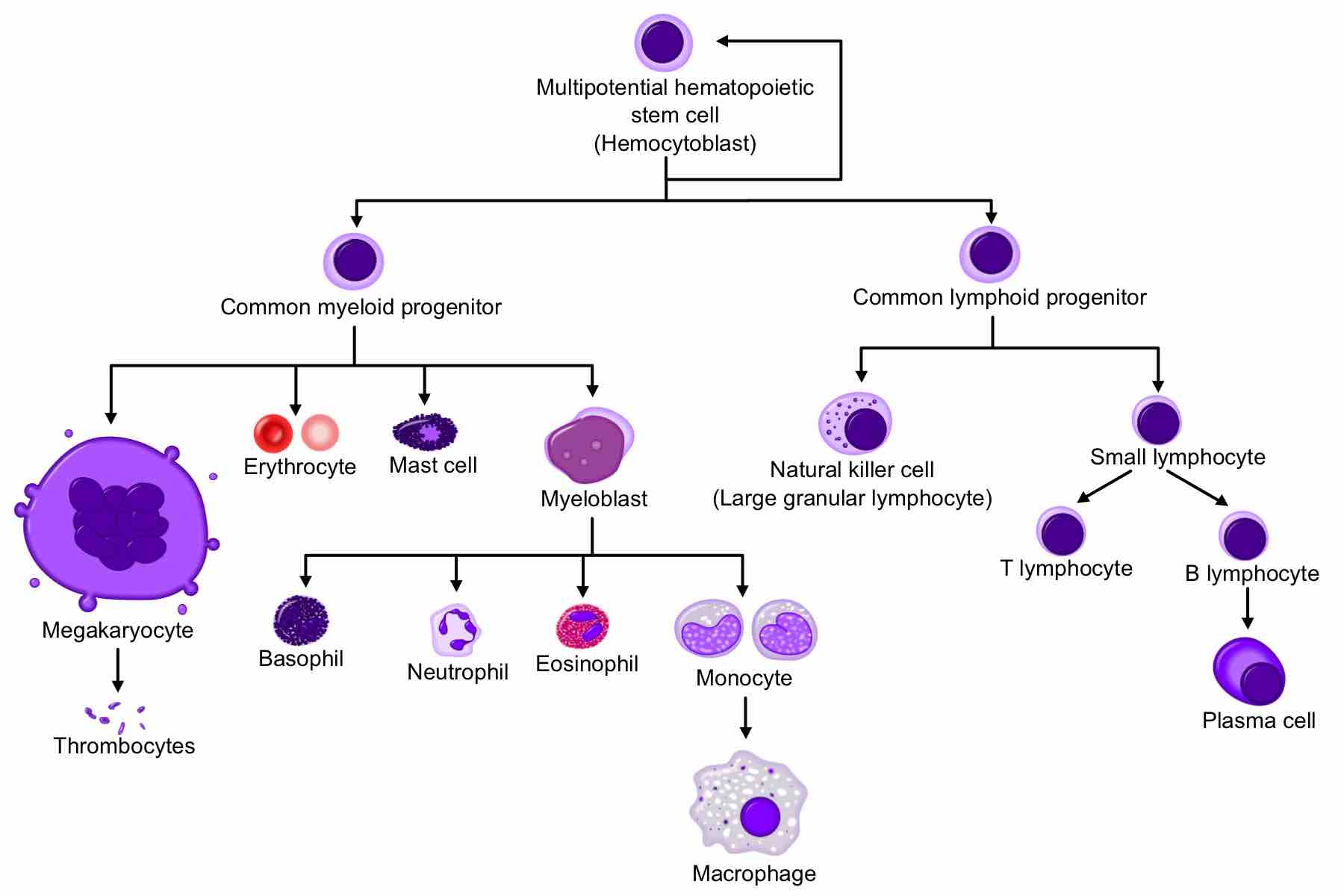Endothelial stem cells (ESCs) are one of three types of stem cells found in bone marrow. They are multipotent, which describes the ability to give rise to many cell types, whereas a pluripotent stem cell can give rise to all types. ESCs have the characteristic properties of a stem cell: self-renewal and differentiation. These parent stem cells, ESCs, give rise to endothelial progenitor cells (EPCs), which are intermediate stem cells that lose potency. Progenitor stem cells are committed to differentiating along a particular cell developmental pathway. ESCs will eventually produce endothelial cells (ECs), which create the thin-walled endothelium that lines the inner surface of blood vessels and lymphatic vessels.
As part of the circulatory system, blood vessels play a critical role in transporting blood throughout the body. Consequently, ECs have unique functions such as fluid filtration, homeostasis, and hormone trafficking. Formation of new blood vessels occurs by two different processes: vasculogenesis and angiogenesis. The former requires differentiation of endothelial cells from hemangioblasts and then the further organization into a primary capillary network. The latter occurs when new vessels are built from preexisting blood vessels.
The lineages arising from the EPC and the hematopoietic progenitor cell (HPC) form the blood circulatory system (see ). Hematopoietic stem cells can of course undergo self-renewal, and are multipotent cells that give rise to erythrocytes (red blood cells), megakaryocytes/platelets, mast cells, T-lymphocytes, B-lymphocytes, dendritic cells, natural killer cells, monocyte/macrophage, and granulocytes. In the beginning stages of mouse embryogenesis, commencing at embryonic day 7.5, HPCs are produced close to the emerging vascular system. In the yolk sac's blood islands, HPCs and EC lineages emerge from the extraembryonic mesoderm in near unison. This creates a formation in which early erythrocytes are enveloped by angioblasts, and together they give rise to mature ECs. This observation gave rise to the hypothesis that the two lineages come from the same precursor, termed "hemangioblast. " Even though there is evidence that corroborates a hemangioblast, the isolation and exact location in the embryo has been difficult to pinpoint. Some researchers have found that cells with hemangioblast properties have been located in the posterior end of the primitive streak during gastrulation.

Simplified hematopoiesis
Blood cellular components are differentiated from hematopoietic stem cells.
In 1917, Florence Sabin first observed that the development of blood vessels and red blood cells in the yolk sac of chick embryos occur in close proximity and time. Then, in 1932, Murray detected the same event and created the term "hemangioblast" for what Sabin had seen. Further evidence to corroborate hemangioblasts comes from the expression of various genes such as CD34 and Tie2 by both lineages. The fact that this expression was seen in both EC and HPC lineages led researchers to propose a common origin.